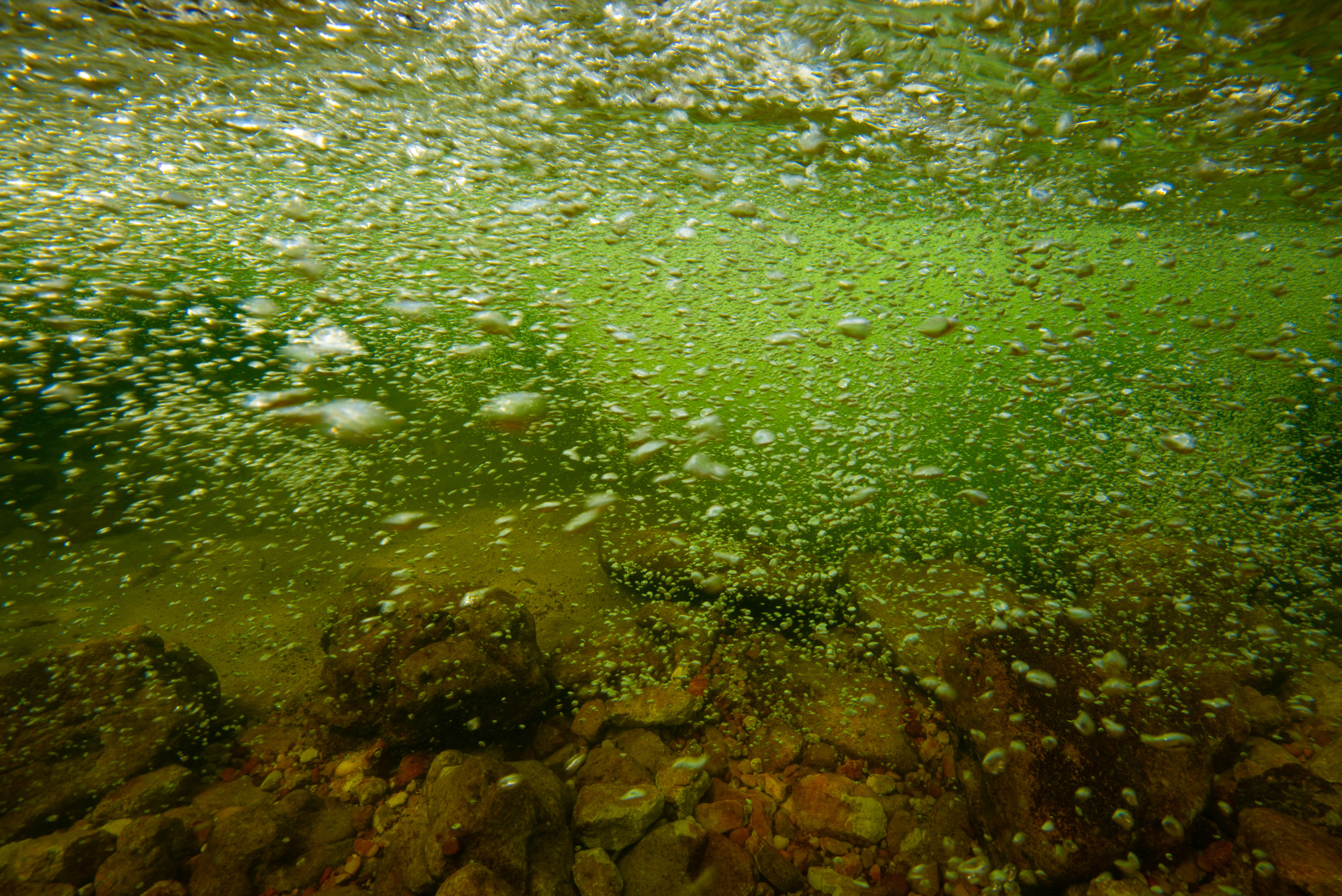|
|
Oxygen (water and sediments)Dissolved oxygen is the amount of oxygen in water, and can come from either the atmosphere or the photosynthesis of plants within the water. The level of dissolved oxygen in the water of wetlands can determine which plants, animals and bacteria are able to survive. The concentration of oxygen that can be dissolved in water, is related to atmospheric oxygen concentration, temperature, pressure and the amount of material in the water that will consume the oxygen. Quick facts
Oxygen supersaturation can occur when oxygen levels exceed 100% saturation and this can harm gill breathing organisms such as fish. It occurs when some photosynthetic aquatic organisms (cyanobacteria, Algae and macrophytes) generate oxygen more rapidly than it is lost, due to turbulent water movement, such as in waterfalls or rapids or below dams during releases. These factors cause the air to mix vigorously with the water, increasing the amount of dissolved oxygen beyond its usual saturation point, or following changes in atmospheric conditions. Oxygen is vital for multicellular life and critical for many aquatic organisms. It is used in respiration, one of the key biophysical processes of most species, Dissolved oxygen can also influence many chemical processes occurring within wetlands. When the rates of oxygen consumption by biota exceed the rates of oxygenation from photosynthesis and atmospheric diffusion at the air-water interface, oxygen saturation can fall. In waterbodies, such as deep dams and turbid drought refuge waterholes in western Queensland rivers, there is little water mixing and warm upper layers can become effectively isolated from deeper cooler layers during warmer months, in a process termed thermal stratification. Bacteria feeding on organic matter in the sediments in stratified systems can use up the oxygen present in the deeper layers and without access to the air for rediffusion, they rapidly become oxygen deficient, or hypoxic. In such systems, organisms requiring oxygen are confined to the upper more oxygen saturated layers. If the stratification breaks down, which can occur rapidly if there is a sudden event like a storm, the entire waterbody can suddenly become hypoxic, leading to fish kill (localised die-off of fish) events such as those in parts of the Darling River in 2018-19[1]. Dissolved oxygen levels in wetland waters usually fluctuate through the year and also throughout the day, depending on temperature, the degree of mixing of the water, water stratification, the number of plants and the amount of organic matter in the water. Wetland sediments and soils are usually natural lacking in oxygen (anaerobic or anoxic) and many plants have adaptations which allow for them to survive in low oxygen conditions. Wetland animals obtain oxygen in different ways, using different types of specialised respiratory structures ranging from syphons for air breathing above the water’s surface to gills that facilitate diffusion of dissolved oxygen from the water to the animal’s blood. Siphons and related apparatus need specialised hairs and similar to break the surface tension of the water, which is difficult for tiny organisms to achieve. Gills take myriad forms to maximise surface area for oxygen diffusion while remaining robust in the face of abrasion from sediments and flowing water. References
Last updated: 6 September 2023 This page should be cited as: Department of Environment, Science and Innovation, Queensland (2023) Oxygen (water and sediments), WetlandInfo website, accessed 8 May 2025. Available at: https://wetlandinfo.des.qld.gov.au/wetlands/ecology/components/water-chemical/oxygen/ |

 — Department of the Environment, Tourism, Science and Innovation
— Department of the Environment, Tourism, Science and Innovation


